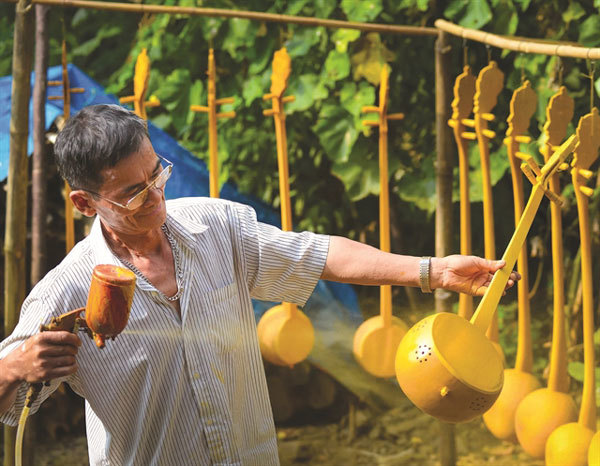The instrument has come along with Then folk singing, making a special art for the groups. Each group in each locality has different techniques to make the instrument.
It often has three strings. Musicians use the index finger of the right hand to strike the strings.
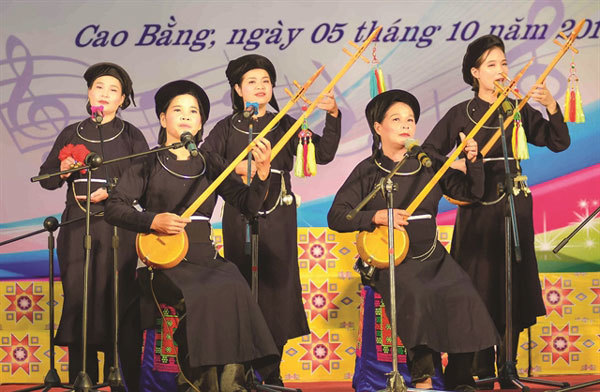 |
| Artists perform Then folk singing and play tính tẩu on stage. — VNA/VNS Photos Viet Son |
Few people know that it takes several stages to make an instrument, which includes a half a dried gourd, a neck made of white mulberry wood and three strings made of silk.
The most difficult task is finding a suitable gourd, which should not be too big or too small. It should be round with a circumference of 60-70cm and should be an old gourd with thick skin so that when it's struck by a stick, the gourd produces a dry echo sound.
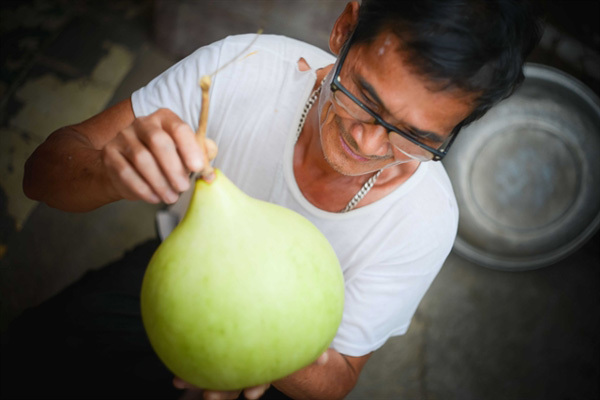 |
| Choosing the right gourd to make the instrument's body is the most difficult task. |
Dam Xuan Hoa, an instrument maker of the Tay group in Cao Bang Province, said the gourd should be cut in half, have the insides removed, soaked in water for a week, then dried. The dried gourd is then soaked in a lime solution for 2-3 days to prevent termites and worms.
Then, the gourd is poked with about 50 holes around it. The size of the holes depends on the size of the gourd.
 |
| Carving the instrument's head. |
Then the craftsman will make a cover for the gourd, which is a light wooden piece, often wood from the hoa sữa (milk flower) tree.
The wooden piece should be stuck to the gourd. In the past, when there was no glue, locals used tree resin to stick the instrument's parts together.
Hoa said it requires great care to make the instrument by hand.
The instrument’s neck is made of a kind of wood that is easily bent like pine or Chinaberry.
The neck measures some 80cm-1m in length. The head of the instrument is carved with decorative patterns. The neck after being stuck on the gourd is polished and dried. Then the craftsman will put strings on the instrument.
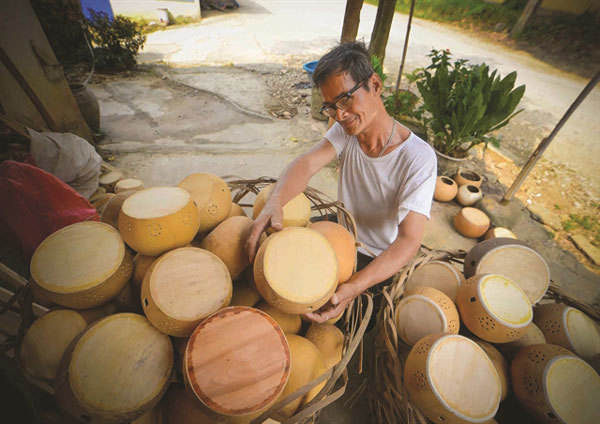 |
||
|
The instrument's body made of gourds.
|
A good instrument should offer an echo sound, with good shape and standard string adjudgment.
“The strings can only be adjudged well by a craftsman who can play the instrument well,” Hoa said.
Hoa knows how to sing folk Then melodies and play the instrument, so doesn't need much time for adjusting the strings. VNS
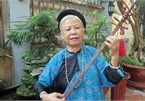
Preserving the charm of ancient ‘Then’ tunes
People’s Artisan Mong Thi Sam from Lang Son Province has devoted more than 63 years to preserving the ancient tunes of ‘Then’ folk singing, a cultural and spiritual heritage of Tay and Nung ethnic groups.
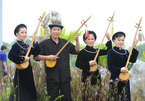
Then singing becomes part of intangible cultural heritages of humanity
The Then singing practice of Vietnam’s Tay, Nung and Thai ethnic groups has been named on the list of Intangible Cultural Heritages of Humanity, the Ministry of Culture, Sports and Tourism’s Department of Cultural Heritage said on December 13.
